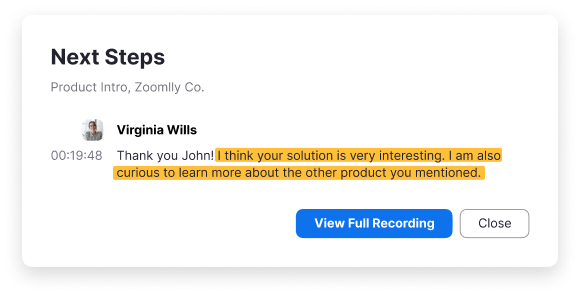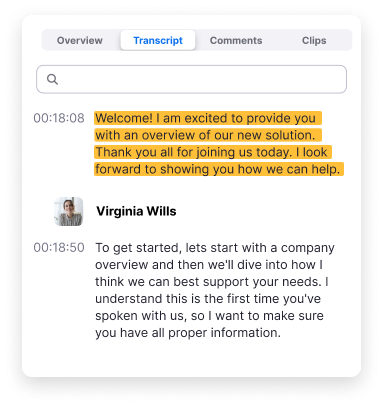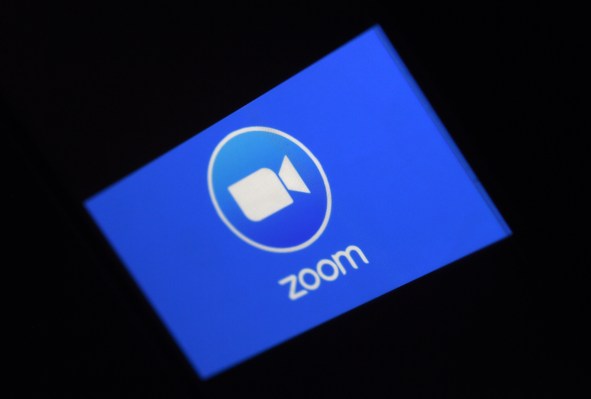Today during its second Work Transformation Summit this week, Zoom announced Zoom IQ for Sales, a product that uses AI to analyze sales meetings and deals to provide insights. It’s the company’s first explicit foray into sales automation software, a market that — according to Verified Market Research — could grow to $7.3 billion in size by 2028.
Sales changed dramatically during the pandemic, when lockdowns forced companies — and their sales teams — to adopt digital tools to get work done. According to a 2020 McKinsey report, almost 90% of sales moved to a videoconference/phone/web sales model in 2020, as business-to-business companies in particular began to see digital interactions as highly important. An unaffiliated study from Harvard Business Review found 82% of companies believe that, out of all technologies, AI has the potential to “significantly” improve alignment between sales and marketing by introducing accountability.
“Zoom is always searching for ways to help our customers elevate their end customers’ experience and Zoom IQ for Sales is the latest development in that journey,” Josh Dulberger, Zoom’s head of product, data and AI, told TechCrunch via email. “Zoom IQ for Sales … [can] identify opportunities, assess risks, and ultimately enable and improve sales team performance. It uses natural language processing models to process post-meeting transcripts and deal progress data, generating insights for sales reps and managers.”
In many ways, Zoom IQ for Sales is an outgrowth of Zoom’s increasing investments in AI. Zoom last May introduced an AI-powered feature that shows highlights from recorded meetings, automatically selecting the “best” parts of meetings based on keywords from audio transcriptions. The company more recently acquired Kites, a startup specializing in real-time translation and transcription.

Image Credits: Zoom
Zoom IQ for Sales also marks the expansion of Zoom’s omnichannel contact center strategy, which arguably began with the launch of Zoom Contact Center in February. At the time, Zoom said it saw Zoom Contact Center as “supporting customer service use cases,” including upselling, by “combining unified communications and contact center capabilities [with Zoom].”
“Zoom has made strategic investments in homegrown speech recognition technologies and recruited a world-class team to produce high-fidelity transcription services that are a backbone for products like Zoom IQ …We’re developing domain-specific NLU (natural language understanding) using few-shot models to build features that will be more reliable and valuable to our users,” Dulberger continued. “Sales teams … want to focus on the customer, and managing the engagement rather than taking notes, but also so they can review their calls to pick up nuances, easily identify next steps, or solicit some guidance from a colleague. Managers and sales leaders can’t sit in on every call, but want to understand the selling climate, when to coach, and which reps are finding the right message.”
Zoom IQ for Sales generates an engagement score that aims to capture how attentive a given customer is based on “talk-time” ratio, the lag time between responses, and the number times that the customer speaks during the call. A separate metric, the sentiment score, measures “positive” and “negative” words and phrases used in meetings. Yet another score monitors the use of filler words like “oh,” “like,” “uh,” and “um,” which some studies show can have a negative impact on sales close rates.

Image Credits: Zoom
Beyond this, Zoom IQ for Sales attempts to identify “good” questions by treating the length of customers’ responses as a corollary for engagement. Sales teams can also feed a list of product features to Zoom IQ so that the software can count the number of times each feature is mentioned in the call.
“Zoom IQ for Sales’ analysis covers customers’ reactions, conversational and selling skills, customer pain points, competitors, deal risk metrics, and more,” Dulberger said. “[Sales teams can even] view [the] Salesforce deal status associated with recorded meetings.”
The jury’s out on the accuracy of Zoom’s algorithms, particularly given the company’s history of deploying flawed AI. Sentiment analysis algorithms are especially prone to gender and race bias, and not every salesperson will necessarily agree with how Zoom measures engagement.

Image Credits: Zoom
That aside, several platforms, including Gong and VoiceOps, already offer features similar to Zoom IQ for Sales — adding pressure on Zoom to demonstrate differentiation. Dulberger made a case for the strength of Zoom’s customer and product ecosystem, painting Zoom IQ for Sales as an opportunity for the company to bolster its broader platform.
Zoom is almost certainly feeling the pressure from investors to establish new lines of revenue. While the company’s earnings soared during the pandemic, guidance is down as customers begin to shift to hybrid and in-office work arrangements less reliant on videoconferencing.
“Half a million businesses choose Zoom and rely on it for internal and external conversations,” Dulberger continued. “The Zoom platform already has a strong foundation in this area with features such as transcription, recordings, and highlights. This also gives us an opportunity to expand this type of functionality across the Zoom platform such as Zoom Contact Center and within our meetings and events solutions to help presenters pace their speech, take notes, capture action items, or employ specific tactics.”
An external beta for Zoom IQ for Sales is currently ongoing. Alongside it, Whiteboard, Zoom’s virtual whiteboarding product, will be generally available beginning April 19. Two related features, Webinar Reactions (which lets webinar attendees use reactions) and Session Branding (which lets hosts customize webinar wallpapers), are available now, while the recently announced Zoom Events Backstage — a behind-the-scenes waiting space for webinar participants — is scheduled to launch in late April.
